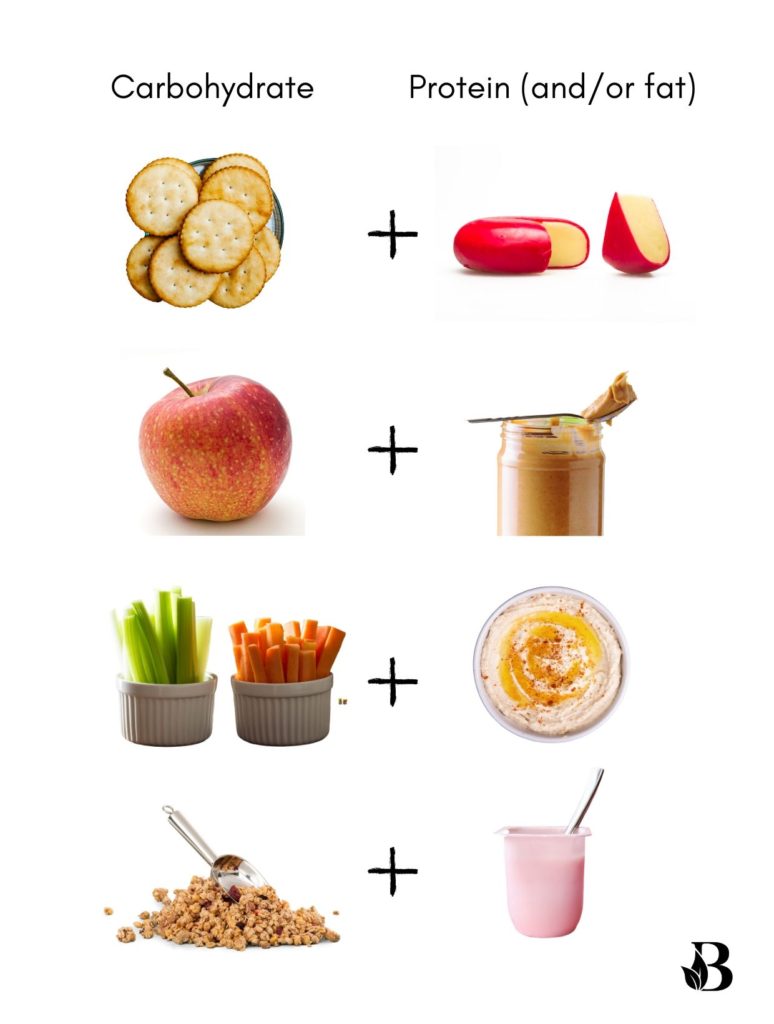Life amidst a global pandemic has many of you wondering this very question right now – are my children hungry or bored? I know this because you have messaged me about it more than a few times!
I get it. Your kids are home all day and it feels like all you ever hear are one of two complaints: “I’m hungry! What’s there to eat?” or “I’m bored! What’s there to do?”. I’ve certainly heard my fair share of phrase number two!
Here’s the thing about asking whether your children are hungry or bored… I’m not sure it’s the right question. If I can take the liberty to rephrase this question it would read something like this?
“Am I helping my children to learn how to identify their hunger (and fullness) cues?”
As I’ve said before, feeding is parenting and much of what our children learn about food and eating comes from us.
When you ask this question, you are pressing pause, with a stance of curiosity (not judgement) and wondering “how am I helping my kiddos to tease apart their own hunger and how it feels in comparison to boredom, or any other array of emotions – like fatigue, loneliness, happiness etc.”
Let’s navigate this hunger vs. boredom question with 6 strategies/tips to consider.
1. Stop all-day grazing. Use set meal and snack times.
This is a game-changer. If you haven’t made the leap into set meal and snack times, it’s time. All children, regardless of age, can benefit from set meal times. When you set specific times for meals and snacks to occur, you naturally build non-eating gaps in your day, which helps kids tune into their hunger and fullness cues and thus to tease apart boredom vs. hunger.
For most children over the age of 1, set meal times look like 3 meals and 1-3 snacks daily.
Before you ask your burning question, let me tell you the answer already. No, this is not authoritarian parenting. No, you’re not starving your children. You’re allowing them to learn the signs and signals of hunger and fullness. You’re enabling them to eat intuitively by allowing them to develop hunger between eating opportunities. Having a schedule actually cultivates intuitive eating skills for kids.
If implementing scheduled eating times feels overwhelming, start with one set meal or snack each day and add from there.
2. Get comfortable saying “The Kitchen is Closed”.

Your secret weapon that will help you stick to set snack and mealtimes is:
“The kitchen is closed. It will reopen at (fill in next snack/meal time).”
Saying this might feel icky to you at first but it’s the BEST way to stick to your schedule and to allow your children to develop hunger between those times. This works best when everyone in the family follows a similar schedule and parents aren’t eating during the kitchen closure in front of the kids. A family-based approach is the best way to go.
3. Serve satisfying snacks.
All foods are good foods but they are even better when you pair them with their best partners! Just like Batman and Robin or Clark Kent and Lois Lane are much better together, these foods are too. If your child is asking for snacks all the time then it may be that their current meals or snacks are missing satiating power!
So what makes a good power snack combo? Pairing a carbohydrate along with a protein and/or fat. So, a granola bar on it’s own won’t last nearly as long as perhaps a granola bar with some Greek yogurt. Let me give you a few more satiating snack examples.

4. Avoid distractions while eating.
It can be tempting to plop your children in front the TV while they eat but this is not helping the situation. This causes them to eat a lot more or a lot less than they normally would because it is hard to listen to your stomach when you’re already listening to the TV. Eating without distractions will help your kids to eat until they are full, which should allow them to go 2.5-4 hrs before their next meal/snack.
5. Appreciate that kids use “hungry” to describe many emotions.
In the toddler and preschool years, kids use “hungry” to express other feelings like boredom and start to make the connection that they receive attention with the statement “I’m hungry”.

If little Timmy is complaining of hunger, take a minute and ask him what’s going on. “What are you up to? Do you want a playmate for a little bit?” If playing with your tyke stops the requests for food, then he is likely not hungry, but simply wanting attention.
For the older children, understand that being stuck at home, sitting at the kitchen table with their chrome book all day constantly cues them to eat (e.g. starring at the kitchen cupboards). It’s like getting an email from your favourite shoe store daily … after a while, you start to tell yourself that you NEED that new pair of heels.
6. Talk about it.
Don’t be afraid to talk about hunger and fullness. I love this resource for younger kids and this resource for older kids when sitting down to talk about hunger and fullness. Children are naturally born within innate hunger and fullness cues. It’s our job to continue to protect their cues (by using the division of responsibility) and helping them if/when they get lost.
I hope these tips not only help you to navigate that burning question “are my children hungry or bored?” but help you to cultivate an environment at home that fosters learning about hunger and fullness in a positive way.






